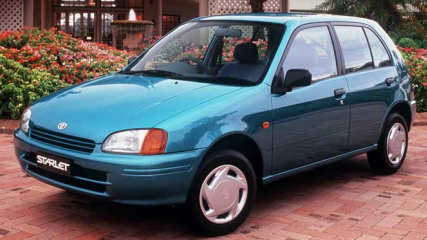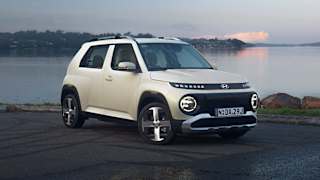Used Toyota Starlet review: 1996-1999
By Graham Smith · 01 Mar 2003
In an effort to turn the tide against relative newcomers Hyundai, Daewoo and Kia, Toyota introduced the Starlet in 1996.Sales of mini cars were booming. Such was the sector's strength that Toyota felt compelled to be part of the action, partly in an effort to regain market leadership it had lost because of booming sales of cars such as the Hyundai Excel.The Koreans, particularly Hyundai, were dominating the segment with attractive driveaway pricing that many manufacturers, including Toyota, simply couldn't match.At the time Toyota didn't have a mini car on the local market. They relied on the strength of the Corolla in the small-car arena. But the mini cars were smaller and cheaper than the Corolla. And, despite its popularity with Australians, it couldn't compete in the cut-throat mini market.The well-built Starlet was new to Australia, but had been a top-selling badge in Japan and New Zealand for many years. So while it was unknown here, it came with a good pedigree. Importantly for car buyers who didn't yet trust the Koreans, it had a Toyota badge.When the Starlet arrived in August 1996 the model had only just been released in its home market. Its styling wasn't anything to write home about, being rather plain in the way of most Japanese cars at the time. It was inoffensive, even pleasant, in a market that can easily be spooked by anything even slightly radical.The real appeal of the Starlet was the assurance of quality and reliability that came with the Toyota badge. In a market dominated by Korean cars that were yet to fully gain the confidence of the car-buying public, the Toyota promised quality, refinement and reliability, even if it wasn't quite as cheap as the price leaders from Seoul.Toyota offered two body styles, both hatches, with either three or five doors, and a choice of three models offering a range of standard equipment. All had a nippy 1.3-litre 16-valve four-cylinder engine that delivered good performance for the class.It pulled well, with plenty of punch for overtaking, and had good fuel consumption. There was a choice of a five-speed manual gearbox and an auto. The auto was an extra cost option ($1500) and, disappointingly, was only a three-speed.The three-door Life was the price leader, and boasted standard features like a headlights-on reminder, intermittent wipers and a radio/cassette sound system with two speakers. The Group X had, in addition, a rev counter, four speakers, rear headrests, driver's footrest, cup holder and body-coloured bumpers.At the top of the range was the five-door Style which, as well as the Group X features, had power steering with tilt adjustment for the steering column. Options included airconditioning, dual airbags and ABS.A new model, Max Life, was introduced in 1998 with 13-inch alloy wheels, a CD player and a rear sun shield as standard equipment. There were a few criticisms of the Starlet when it was launched.The rear seat room was thought to be insufficient, suitable for a couple of kids or smallish adults. It would definitely be too tight for a couple of brawny wharfie types, but then it was unlikely you'd ever find a wharfie in the back seat of a car called a Starlet.There was also some criticism of the size of the boot, which was said to be too small, but apart from those complaints the Starlet was quite highly praised. The renowned Toyota build quality shone through.Doors closed with a solid thunk, panel gaps were even, and the paint finish was deep and lustrous. Inside the quality was equally obvious in the fit and finish of the plastic trim components.On the road the Starlet drove with the assurance of a much bigger car, with a comfortable ride and secure handling. Performance was on a par, or better, than the competition in the class, with impressive lowdown grunt that made for zippy response in city traffic, and effortless cruising on the open road.Start with the usual suspects when looking at a Starlet. Uneven body gaps, overspray and mismatching paint on adjoining panels are signs of body damage. Look for signs of abuse or lack of attention. Being relatively new, there is little likelihood of major wear showing up on interior trim, but look anyway.Check the driver's seat (it will be worn more than the other seats) and the carpet under the driver's feet. Check for a service record. As shown by the recent revelations about stolen cars being easily "rebirthed", a service record becomes even more important, particularly if you are buying from a private seller.A service record can give you a picture of the mileage accumulation of the car. Mechanics record the mileage of the car when they service it so the record will show the pattern of mileage through the life of the car.It can be quite reassuring to see that the mileage has grown at a steady rate that would take it to that shown on the odometer at the time you inspect it.A service record also gives you some clues on who to talk to when you find out more about the life of the car on which you're about to spend your hard-earned cash.Mechanics have a high regard for the Starlet and report few faults with it. When it's serviced according to Toyota recommendations, mechanics say a Starlet will do 300,000km-plus without problem.An important service item is the cam timing belt, which should be changed every 100,000km. Because the engine is a free-spinning design, no internal damage will occur if the belt breaks in service, but you will be left stranded on the side of the road if it does.







